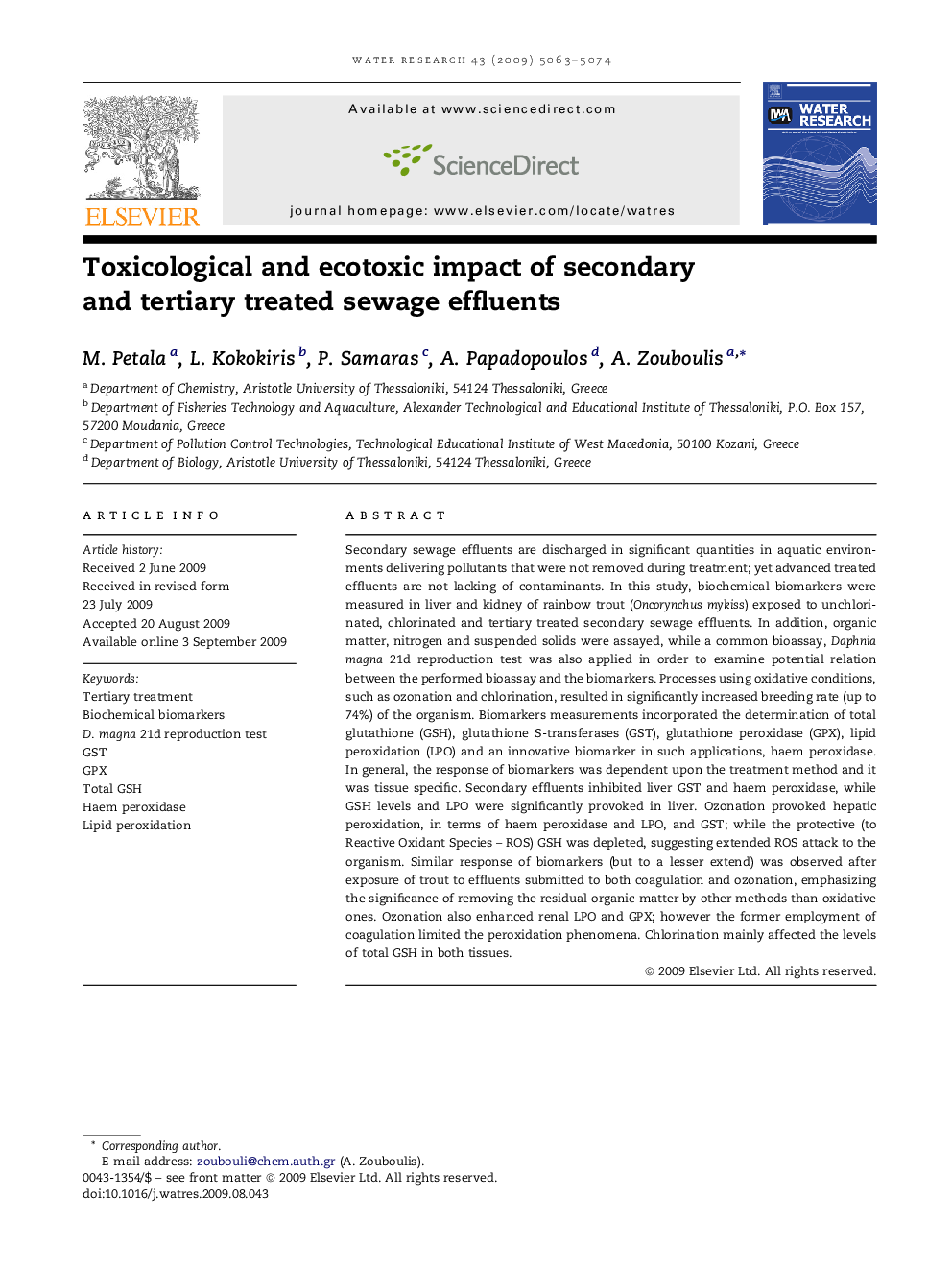| Article ID | Journal | Published Year | Pages | File Type |
|---|---|---|---|---|
| 4485371 | Water Research | 2009 | 12 Pages |
Secondary sewage effluents are discharged in significant quantities in aquatic environments delivering pollutants that were not removed during treatment; yet advanced treated effluents are not lacking of contaminants. In this study, biochemical biomarkers were measured in liver and kidney of rainbow trout (Oncorynchus mykiss) exposed to unchlorinated, chlorinated and tertiary treated secondary sewage effluents. In addition, organic matter, nitrogen and suspended solids were assayed, while a common bioassay, Daphnia magna 21d reproduction test was also applied in order to examine potential relation between the performed bioassay and the biomarkers. Processes using oxidative conditions, such as ozonation and chlorination, resulted in significantly increased breeding rate (up to 74%) of the organism. Biomarkers measurements incorporated the determination of total glutathione (GSH), glutathione S-transferases (GST), glutathione peroxidase (GPX), lipid peroxidation (LPO) and an innovative biomarker in such applications, haem peroxidase. In general, the response of biomarkers was dependent upon the treatment method and it was tissue specific. Secondary effluents inhibited liver GST and haem peroxidase, while GSH levels and LPO were significantly provoked in liver. Ozonation provoked hepatic peroxidation, in terms of haem peroxidase and LPO, and GST; while the protective (to Reactive Oxidant Species – ROS) GSH was depleted, suggesting extended ROS attack to the organism. Similar response of biomarkers (but to a lesser extend) was observed after exposure of trout to effluents submitted to both coagulation and ozonation, emphasizing the significance of removing the residual organic matter by other methods than oxidative ones. Ozonation also enhanced renal LPO and GPX; however the former employment of coagulation limited the peroxidation phenomena. Chlorination mainly affected the levels of total GSH in both tissues.
